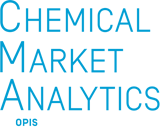- Market Overview
- Key Benefits
- Service Features
- Annual Table of Contents
Market Overview
Duration: Long-term outlook to 2050
Although over 90 percent of plasticizer and solvent alcohols are derived via oxo technology, some are produced via ethylene oligomerization with a Ziegler catalyst (alpha alcohols). Plasticizer alcohol is an industry term for C6 to C13 alcohols that are primarily used as chemical intermediates for plasticizer manufacture. C3, C4 and C5 oxo alcohols are called solvent alcohols, recognizing that the largest historical area of use for these alcohols and their derivatives is as carriers/diluents for paints and other surface coatings. Normal butanol (NBO) is a C4 alcohol, while 2-ethylhexanol (2-EH) is a C8 alcohol. NBO remains an important intermediate used in the production of acrylate esters, butyl acetate, glycol ethers, plasticizers and solvents. 2-EH is also called a plasticizer alcohol. With a percentage share of about 70%, plasticizers are by far the largest end-use segment for 2-EH. They provide flexibility to normally rigid and brittle PVC, and are used in the manufacturing of consumer goods, such as toys, cling film, flooring, cable insulation, and medical tubing. The second largest 2-EH derivative, 2-ethylhexyl acrylate (2-EHA), is mainly used as a monomer to produce acrylic resins for latex paints, especially for exterior applications, and for pressure sensitive adhesives. Other end-uses of 2-EH include lube and oil additives (zinc di-2-ethylhexyl dithiophosphate), mining chemicals, surfactants, and diesel fuel cetane improvers such as 2-ethylhexyl nitrate (2-EHN).
The oxo process, originally developed in Germany in the late 1930s, is the principal synthetic route for production of C4 and C8 alcohols. 2-ethylhexanol, n-butanol and isobutanol are produced from butyraldehydes, which are generated via the oxo reaction of syngas with propylene. The Ziegler process has ethylene as a feedstock and involves chain growth, oxidation and hydrolysis to yield even numbered carbon linear alcohols (C6, C10). Minor quantities of plasticizer alcohols are obtained from natural products and other processes. Isobutanol and n-butanol can also be produced by fermentation processes, also known as bio-based butanols.
Key Benefits
Duration: Long-term outlook to 2050
The World Analysis – Oxo-Alcohols provides a comprehensive analysis and key insights of critical market developments as they shape the future outlook for the global 2-ethylhexanol and n-butanol markets.
The following reports, data files, analytical tools and visualization modules are available online and can be downloaded from our website:
- Direct Access to the Subject Matter Experts
- In-depth exploration of present market strategic insights, recognition of critical challenges, and presentation of our experts’ forecasts and analysis
- Explanatory Notes detailing data sources, methodologies, unit and conversion factors, and World Analysis deliverables.
- Energy and Economy assumptions
- Price, cost, and margin base assumptions forecast and sensitivities analysis, including price assessment methodology and price definitions across all regions.
- Excel data files with standard supply/demand graphics and price forecasts extended to 2050, trade grids with country and regional trade flows Data appendix (Excel) with supply/demand, capacity and trade tables.
- An online dashboard visualization of capacity, supply/demand, trade grids, and price, cost and margin forecasts
- Supply/demand and capacity database access via data browser
- Data Appendix (Excel) with supply/demand and capacity tables
- Capacity by company/shareholder, capacity integration, top producer/consumer and surplus/deficit capacity ranking, and ownership/subsidiary information
In addition to the main products, 2-ethylhexanol and n-butanol, capacity data and brief textual analysis are provided for the following product:
- Isobutanol
This World Analysis contains detailed information on capacities, production, demand, and trade for all significant producing and consuming countries and regions. Although data gathering is essential for understanding history and potential future trends, we believe that the interpretation and analysis of the data is the most valuable information to our clients.
Service Features
Duration: Long-term outlook to 2050
SUPPLY/DEMAND BALANCES
Frequency: Bi-annual
Format: Excel
Timeframe: 10-year forecasts available from periods 1990 – 2050
Area Coverage: By country/region; include “hypothetical” capacity changes in the forecast period
Chemical Coverage: Cyclohexane (CHX), Caprolactam (CPL), Adipic Acid, HMDA, Nylon Polymerization
CAPACITY DATABASE
Frequency: Updated daily
Format: Excel
Timeframe: 10-year forecasts available from periods 1990 – 2050
Coverage:
- Nameplate capacity on individual plant location by producer and by the shareholder for main study products + essential derivatives
- Integration table and top producer and consumer ranking tables (includes net surplus/deficit)
PRICE & COST FORECASTS
Frequency: Quarterly
Format: Excel
Timeframe: up to 2050
Area Coverage: For the critical regions of North America (US), Europe & Asia
Chemical Coverage: Cyclohexane, Caprolactam, Adipic Acid
TRADE GRIDS
Frequency: Bi-annual
Format: Excel
Timeframe: 1 year of history, up to 10 years of forecast
Area Coverage: Between partner countries and by region
Chemical Coverage: Cyclohexane, Caprolactam, Adipic Acid, HMDA, Adiponitrile
REPORT WITH STRATEGIC INSIGHTS AND EXECUTIVE OVERVIEW
Frequency: Annual
Format: PDF/HTML
Timeframe: 5-year history, forecast to 2050
Coverage: Regional market summaries
- Production economics/snapshots for selected regions/processes
- Production process/technology overview
ADDITIONAL FEATURES
- Access to our global team of subject matter experts
- Interactive data visualization module (dashboard)
- Standard supply/demand graphs
- Data appendix with supply/demand and capacity tables
- Supply/demand and capacity database access via data browser
Annual Table of Contents
- Introduction 4
- Executive Overview 5
- n-Butanol 5
- 2-Ethylhexanol 8
- Strategic Insights 11
- Economic Forecast Update 11
- Higher energy prices and cost competitiveness 12
- Oxo-alcohol capacity developments and outlook – Mainland China and India 13
- Asian plasticizer market developments and impact on 2-EH demand 14
- Bio-based butanol and isobutanol 15
- Production Process Overview 16
- Introduction 16
- Oxo Process 16
- Bio-based Butanol 17
- Price Forecast 18
- Methodology 18
- Price Forecast Tables and Graphs 19
- Supply/Demand Forecast Methodology 22
Market Coverage
Fuel
Paint & Coating
Plasticizer
Solvent
Related Products
Related Chemicals
Looking for Short Term Analysis ?
Your Success, Our Priority
In a world where markets evolve rapidly, having the right insights is the key differentiator. Partner with us for critical market insights that propel you beyond competition. Your success is not just a goal, it's our commitment.
Contact us today to revolutionize your approach to business strategy with Market Insights!



